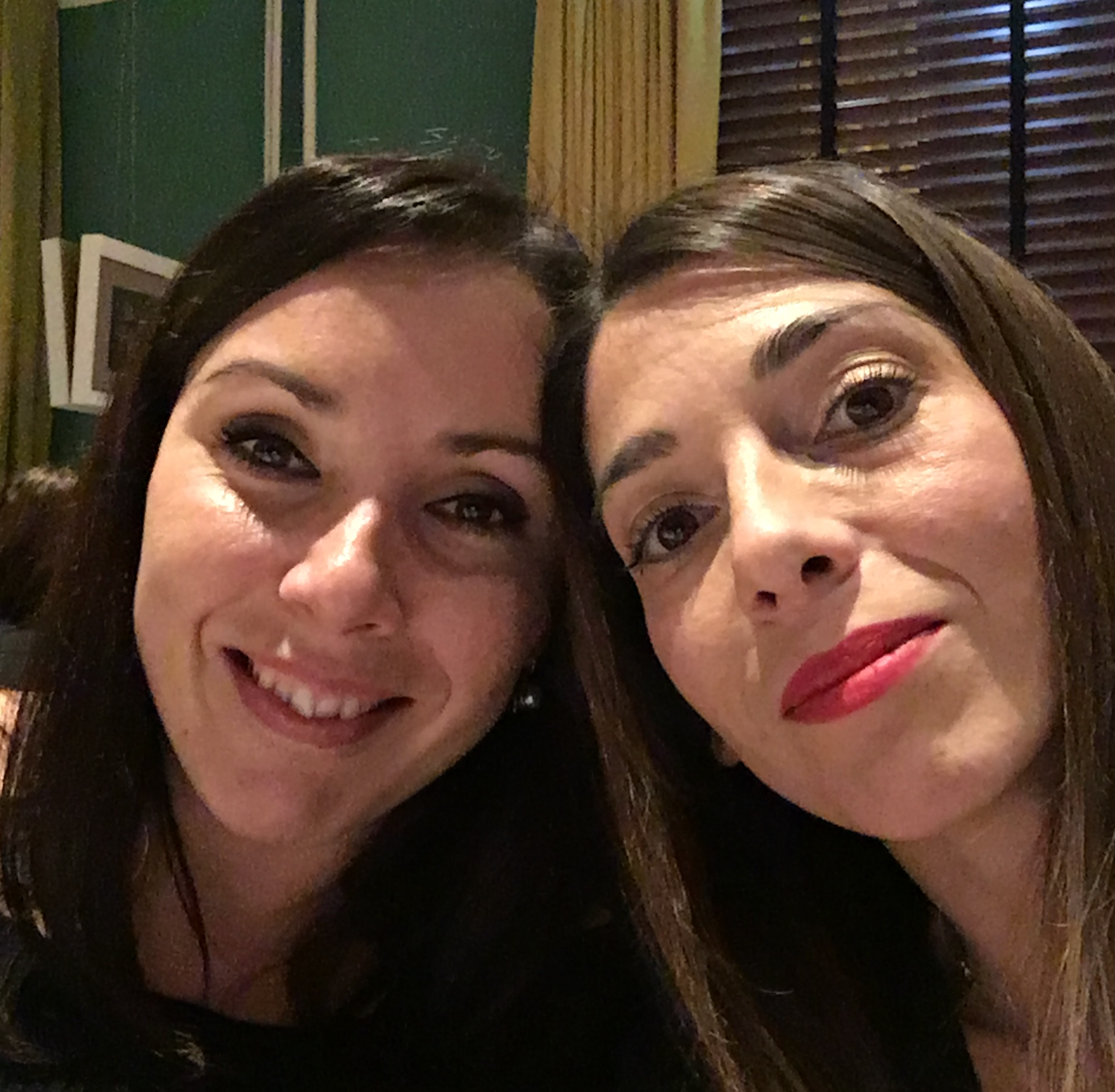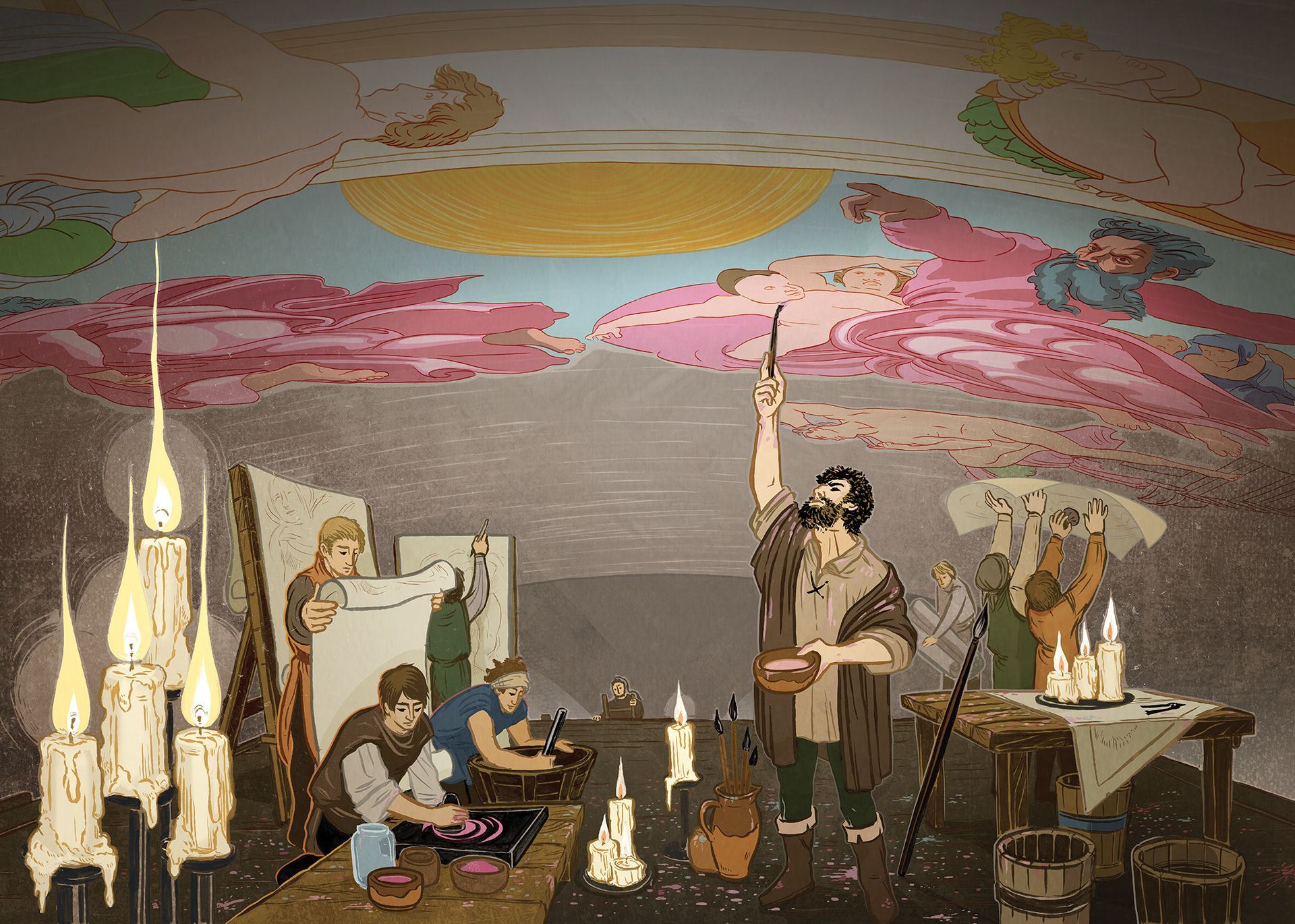Valentina Ansuini and Jade Bajeot - Michelangelo and The Dream of the Sistine Chapel
Authors say ...
"Michelangelo and the Dream of the Sistine Chapel" is an illustrated book in English, presented in A4 format to give ample space to the full-page images that bring its pages to life.
It is a project created by women: Jade and Valentina—an archaeologist and an art historian, respectively—are the authors, while Sabrina Gabrielli is the illustrator.
Why a book about Michelangelo?
We both work as tour guides in Rome, where the demand for family-friendly tours is particularly high, especially in the summer. However, despite their popularity, such tours come with logistical challenges, and the Vatican Museums, in particular, are not the easiest attraction for young visitors. Overcrowded, complex, and at times difficult to engage with, these museums can be overwhelming for children.
We wanted to create a
tool that would help people from different cultural backgrounds connect with an artwork that is world-famous yet often misunderstood or surrounded by misconceptions. Our aim was to write an introductory bookthat would serve as a companion to a visit to the Vatican Museums.

Since speaking is strictly forbidden inside the Sistine Chapel—especially for tour guides—the book functions as a visual and informative support, providing a structured introduction to help visitors better appreciate what they are about to see.
How do you make Michelangelo engaging for younger audiences?
One of our biggest challenges was making the book appealing to young readers. How do you capture their fleeting attention, conditioned by the fast-paced rhythms of television and video games? How do you get them to stop, look, and marvel at the extraordinary beauty revealed before their eyes?
Our strategy was to encourage them to identify with Michelangelo himself, the protagonist of our story. From childhood, Michelangelo embarked on a journey of discovery and learning, filled with wonder, challenges, and hard work, which eventually led him to achieve worldwide fame.
Michelangelo is often depicted from behind—working in Ghirlandaio’s workshop, thinking, learning, and absorbing knowledge. We follow him as he arrives in Rome, as he paints, allowing readers to see the world from his perspective.
One of our favorite illustrations shows him standing alone before the vast, empty surface of the Last Judgment. Though the wall is still blank, Michelangelo already envisions the figures that will soon fill it. His imagination projects itself onto the white surface, driven not only by natural talent but also by determination and relentless effort.
Portraying Michelangelo as a Human, Not Just a Myth
Michelangelo is often seen as a legend, an almost supernatural figure of pure genius. While his artistic brilliance is undeniable, this perception has also made him seem distant and unapproachable, as if he existed outside of history and beyond the reach of ordinary people.
In our book, we wanted to give him a human face. We highlight his complex personality—his immense ambition, his social difficulties, and his struggles. If words alone were not enough to express these ideas, the illustrations step in, depicting Michelangelo with his hopes, dreams, and eccentricities.
Sabrina’s artistic choice to illustrate him isolated from others reflects his difficult, temperamental character.
Debunking Myths: The Sistine Chapel in Context
Throughout the book, we include small sections called "Myths to Debunk." These emphasize that, while the Sistine Chapel is the work of a genius, it was not created in isolation. Rather, it was the product of a remarkable historical moment, when great talents and the necessary resources came together under a political, social, and religious climate of extraordinary dynamism.
Pope Julius II appears briefly in our book, but his role is crucial. His passion for art and antiquity, as well as his remarkable ability to recognize talent, gave Michelangelo the opportunity to create something revolutionary.
How the Book is Structured
The two major masterpieces—the ceiling frescoes and the Last Judgment—are represented in a simplified manner, accompanied by clear iconographic descriptions, with the key figures listed for easy reference.
For the ceiling, we included two fold-out pages, allowing readers to see the entire fresco in one extended view. This makes the book an excellent educational resource, particularly useful for tour guides and teachers when explaining the artwork to children and young students.
The illustrations are intentionally flat and schematic, providing an overview without revealing too much detail—this way, the "wow" effect remains intact when visitors finally step inside the real Sistine Chapel.
Michelangelo’s artistic genius is rooted in his mastery of three-dimensionality and bold contrasts, which together create an immersive, almost otherworldly experience. When standing beneath the Chapel’s ceiling, visitors often find themselves wondering: Is this real, or is it an illusion?
The powerful prophets and sibyls, seated above the windows in striking foreshortened poses, seem to break through the flat surface. Their bodies, sculptural and monumental, appear to shape space itself. Michelangelo found a new solution to an old artistic problem—a perspective that was not strictly geometric but instead dynamic and dramatic—to adapt to the curved vault of the Chapel.
Creating the Book: A Collaborative Adventure
Working together, each of us bringing different backgrounds and experiences, was a new and exciting adventure.
Our discussions were endless! Jade and I were writing an illustrated book for the first time, learning how to translate text into visual storytelling—planning the structure, arranging space, and communicating our vision to Sabrina.
Sabrina, a true professional, helped us organize a detailed storyboard.
Looking back, we realize that we had already "imagined" the book before seeing it take shape. The concept was there—unclear, perhaps, but vivid in our minds. Sabrina amazed us by bringing our ideas to life, so much so that, every time she presented a new illustration, we couldn’t help but exclaim:
"Wow, that's exactly how we pictured it!"
Illustration and Emotion
Color and form amplify emotions, elevating the narrative to a symbolic level, much like in a fairy tale. The text and illustrations work together, stimulating the reader’s emotions, allowing them to connect on different levels based on personal experience and sensitivity.
One of my favorite illustrations is the Sack of Rome, which marks a dramatic shift in the story. The 1527 invasion by the Landsknecht mercenaries was a turning point, a humiliating defeat for the papacy that had far-reaching consequences.
The deep reds and blues, the brutal expressions of the soldiers, and the spiraling flames create a sense of chaos and violence. This change in atmosphere mirrors the transformation between Michelangelo’s ceiling frescoes and the Last Judgment.
Nearly twenty years separate these two works, and by the time Michelangelo returned to the Sistine Chapel, the world had changed. The serene beauty of the Creation, where humanity is at the center of God’s divine plan, had given way to turmoil and uncertainty—the Last Judgment offers no mercy, only the inescapable fate of the damned.
Historical Accuracy and Artistic Technique
Since our audience includes history enthusiasts and professional guides, we made a conscious effort to maintain historical accuracy—reconstructing environments, tools, and clothing with as much precision as possible.
Sabrina’s patience was extraordinary, as we requested countless revisions! She herself conducted extensive research to ensure accuracy in portraying characters, settings, and period details.
A crucial part of our book focuses on fresco technique—understanding how a fresco is created, from preparing the wall to applying pigments, is key to appreciating Michelangelo’s innovation.
Beyond Michelangelo: Censorship and Restoration
We also discuss what happened after Michelangelo—including censorship that covered nudity, and restorations that darkened and damaged the frescoes over time.
Finally, we explore the modern restoration, which has allowed us to rediscover the Sistine Chapel as close to its original splendor as possible.
A Future Series on Art and Cities
We strongly believe that art history should have a larger role in education and that our cultural heritage should be a source of pride.
Our dream? To continue with a series of books about Rome, Florence, and Venice, told through their greatest artists.











